This comprehensive guide explores the best smart home devices compatible with Google Assistant. It provides insights into features, benefits, and user experiences to help you make informed decisions for your smart home setup.
1. What is Google Assistant?
Google Assistant is a virtual assistant powered by artificial intelligence. It is designed to perform tasks and provide information through voice commands, making it an essential component of modern smart homes.
2. Benefits of Using Google Assistant in Your Smart Home
- Hands-Free Control: Enjoy the convenience of voice-activated commands.
- Seamless Device Integration: Connect various devices effortlessly for a cohesive experience.
- Enhanced Efficiency: Automate everyday tasks to save time and energy.
3. Top Smart Home Devices Compatible with Google Assistant
- Smart Speakers: Devices like Google Nest Audio offer high-quality sound and allow voice control.
- Smart Lighting Solutions: Options such as Philips Hue provide customizable settings for ambiance.
- Smart Security Devices: Cameras and doorbells enhance home security with real-time monitoring.
- Smart Thermostats: Devices like the Nest Learning Thermostat optimize heating and cooling schedules.
4. Integrating Google Assistant with Home Entertainment
Google Assistant enhances home entertainment systems by enabling voice control for streaming devices and televisions. This creates a seamless media experience.
5. Smart Home Hubs and Controllers
Smart home hubs centralize control of various devices, allowing users to manage their ecosystem through Google Assistant for improved convenience.
6. Conclusion: Embracing the Smart Home Revolution
Integrating Google Assistant into your smart home not only enhances convenience and efficiency but also transforms the way you interact with your living space, making it a worthwhile investment for modern homeowners.
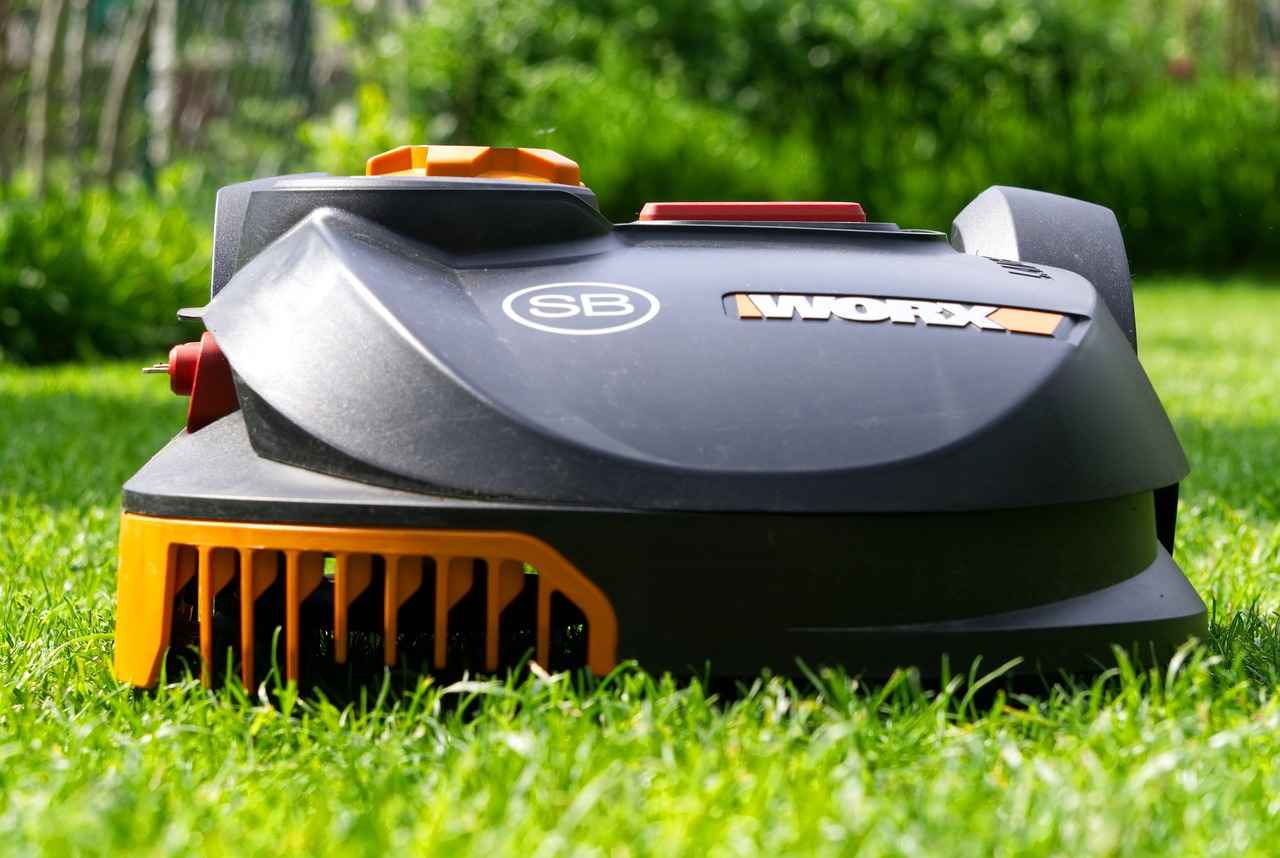
1. What is Google Assistant?
Google Assistant is a sophisticated virtual assistant that utilizes artificial intelligence to perform a wide array of tasks and provide information through voice commands. This makes it an indispensable part of the modern smart home ecosystem.
Developed by Google, this assistant allows users to interact with their devices in a more natural and intuitive way. By simply speaking commands, users can control various smart home devices, ask questions, set reminders, and even manage daily tasks, all hands-free.
One of the most significant advantages of Google Assistant is its ability to integrate seamlessly with a multitude of smart home devices. From lights and thermostats to security systems and entertainment devices, Google Assistant acts as a central hub, enabling users to manage their home environment effortlessly.
- Hands-Free Control: With voice activation, users can control devices without needing to physically interact with them, making it incredibly convenient.
- Smart Automation: Google Assistant can automate routines, allowing users to set up multiple actions with a single command, enhancing efficiency in daily life.
- Wide Compatibility: It supports a vast range of devices from various manufacturers, ensuring that users can create a customized smart home experience.
Moreover, Google Assistant continuously learns from user interactions, adapting to preferences and improving its responses over time. This adaptive learning feature ensures a more personalized experience, making it easier for users to manage their smart homes.
In conclusion, Google Assistant is not just a voice-activated tool; it is a comprehensive solution for modern living, transforming how we interact with technology in our homes. Its capabilities extend far beyond simple commands, making it a pivotal element in the evolution of smart home technology.

2. Benefits of Using Google Assistant in Your Smart Home
Integrating Google Assistant into your smart home brings a myriad of benefits that can significantly enhance your daily life. With its advanced capabilities, Google Assistant not only simplifies tasks but also transforms your living space into a more efficient and interactive environment.
One of the most notable advantages is hands-free control. Imagine being able to adjust your home’s lighting, temperature, or even play your favorite music simply by using your voice. This feature is particularly useful when your hands are full or when you’re moving around the house. With Google Assistant, tasks that once required manual effort can now be executed effortlessly.
Furthermore, Google Assistant offers seamless device integration. It is compatible with a wide range of smart devices, from lights and thermostats to security cameras and appliances. This compatibility allows you to manage all your devices from a single platform, creating a cohesive smart home ecosystem. For example, you can set up your smart lights to dim when you start a movie, all initiated by a simple voice command.
Moreover, integrating Google Assistant enhances efficiency for everyday tasks. The virtual assistant can automate routines, allowing you to create specific commands that trigger multiple actions simultaneously. For instance, saying “Good morning” can turn on the lights, start the coffee maker, and adjust the thermostat, streamlining your morning routine.
In addition, Google Assistant can help with energy management. By monitoring and controlling your smart devices, it can suggest energy-saving tips and optimize your usage patterns, ultimately leading to lower utility bills. This feature not only benefits your wallet but also contributes to a more sustainable lifestyle.
In conclusion, the integration of Google Assistant into your smart home setup is a game-changer. With hands-free control, seamless device integration, and enhanced efficiency, it simplifies your life and elevates your home experience. Embracing this technology is undoubtedly a step towards a smarter, more connected living space.
2.1. Voice Commands and Automation
Voice commands and automation are at the forefront of transforming our daily interactions with smart home devices. These features not only enhance convenience but also significantly improve the overall user experience in a smart home environment.
With voice commands, users can effortlessly control a wide range of devices simply by speaking. This hands-free approach allows for quick adjustments without the need to physically interact with each device. For instance, you can say, “Hey Google, turn off the lights,” and instantly enjoy a dimmed ambiance without lifting a finger. This feature is particularly beneficial for individuals with mobility challenges, making smart homes more accessible.
Moreover, the integration of automation features allows users to create routines that streamline their daily activities. By programming specific actions to occur at designated times or in response to particular triggers, users can simplify tasks that would otherwise require multiple commands. For example, a morning routine could include turning on the coffee maker, adjusting the thermostat, and activating the lights—all initiated with a single command like, “Good morning.” This not only saves time but also enhances the efficiency of daily routines.
Additionally, automation can extend to scheduling and timers, enabling devices to operate at optimal times. For instance, you can set your smart thermostat to lower the temperature during the hottest part of the day, ensuring comfort while conserving energy. This capability not only promotes a more efficient home but also contributes to lower utility bills.
In conclusion, the combination of voice commands and automation in smart home technology significantly enriches the user experience. By allowing effortless control and the ability to automate routines, these features not only enhance convenience but also contribute to a more efficient and enjoyable living environment.
2.1.1. Creating Custom Routines
Creating Custom Routines within your smart home ecosystem can significantly enhance your daily life by simplifying complex tasks into a single command. With Google Assistant, users can automate multiple actions, making their homes not just smarter but also more efficient.
Imagine coming home after a long day. Instead of fumbling with switches and dials, you can simply say, “Hey Google, I’m home.” This single command can trigger a cascade of actions: the lights turn on, the thermostat adjusts to your preferred temperature, and your favorite playlist starts playing. This is the power of custom routines.
To set up a custom routine, follow these steps:
- Open the Google Home app on your device.
- Select Routines from the menu.
- Tap on Manage Routines and then Create New.
- Choose a trigger phrase that you will use to activate the routine.
- Add the actions you want to automate, such as turning off lights, adjusting the thermostat, or locking doors.
- Save your routine and test it out!
Custom routines not only save time but also enhance energy efficiency. For instance, you can create a routine that turns off all lights and electronics when you leave home, helping to reduce energy consumption. This feature is particularly beneficial for busy individuals and families who often forget to turn off devices when they leave.
Moreover, these routines can be scheduled to operate at specific times, further optimizing your home’s functionality. For example, you could set a routine to prepare your home for bedtime by dimming the lights and locking the doors at a designated hour.
In conclusion, custom routines with Google Assistant offer a powerful way to streamline your daily tasks, enhance your home’s efficiency, and create a more enjoyable living environment. By leveraging this feature, you can transform your smart home experience into one that is not only convenient but also tailored to your lifestyle.
2.1.2. Scheduling and Timers
Scheduling and timers are essential features in modern smart home devices, enabling users to automate their daily routines effortlessly. By setting specific times for devices to operate, homeowners can enhance both convenience and energy efficiency throughout the day. This functionality is particularly beneficial for busy individuals who want to streamline their household management.
Imagine waking up to your smart coffee maker brewing your favorite blend at the same time every morning, or having your smart lights gradually brighten to mimic a natural sunrise. Such automated routines not only save time but also create a more pleasant living environment. Additionally, these features can help reduce energy consumption by ensuring devices are only active when needed.
- Energy Savings: By scheduling devices to turn off during peak hours or when not in use, users can significantly lower their energy bills.
- Enhanced Security: Timers can be set for lights and cameras to create the illusion of occupancy, deterring potential intruders.
- Convenience: Automating tasks such as adjusting the thermostat or turning on appliances means less manual effort and more free time for homeowners.
Moreover, the integration of scheduling features with voice commands via platforms like Google Assistant allows for even greater flexibility. Users can easily modify schedules on-the-go, ensuring that their smart home adapts to their changing needs.
In conclusion, the scheduling and timer functionalities of smart home devices are crucial for optimizing daily life. They not only provide convenience but also contribute to a more energy-efficient and secure home environment. Embracing these features can significantly enhance the overall smart home experience.
2.2. Compatibility with Various Devices
Compatibility with Various Devices is a cornerstone of creating a seamless smart home experience with Google Assistant. This powerful virtual assistant is designed to work with a multitude of smart devices, ensuring that users can integrate their favorite products into a cohesive smart home system. The ability to control various devices through voice commands not only enhances convenience but also simplifies daily routines.
Google Assistant supports an extensive range of devices, including:
- Smart Speakers: Devices like Google Nest Audio enable users to control their smart home with voice commands while delivering high-quality sound.
- Smart Lights: Brands like Philips Hue and LIFX allow users to adjust lighting settings through voice control, adding ambiance and energy efficiency.
- Smart Thermostats: Devices such as the Nest Learning Thermostat optimize heating and cooling schedules, promoting energy savings.
- Smart Security Cameras: Integrating cameras like the Nest Cam enhances home security, providing real-time monitoring and alerts.
- Smart Appliances: Refrigerators and ovens can be controlled remotely, making cooking and food management more efficient.
One of the standout features of Google Assistant is its ability to create custom routines. This allows users to automate multiple actions with a single command. For instance, saying “Goodnight” can turn off lights, lock doors, and adjust the thermostat simultaneously. This level of integration not only saves time but also enhances the overall smart home experience.
Moreover, Google Assistant’s compatibility extends to third-party hubs like Samsung SmartThings, which further broadens the spectrum of devices that can be controlled. This flexibility means that as new smart devices enter the market, users can easily incorporate them into their existing setup.
In conclusion, the compatibility of Google Assistant with various devices is a significant advantage for users looking to build a smart home. By leveraging this compatibility, individuals can create a personalized and efficient living environment that caters to their specific needs and preferences.

3. Top Smart Home Devices Compatible with Google Assistant
In today’s rapidly evolving technological landscape, smart home devices have become essential for enhancing our daily lives. Google Assistant, a powerful virtual assistant, seamlessly integrates with a wide range of smart home devices, providing users with convenience, control, and automation. This section explores some of the top devices that work harmoniously with Google Assistant, ensuring a smarter home experience.
| Device Type | Popular Options | Key Features |
|---|---|---|
| Smart Speakers | Google Nest Audio, Amazon Echo | Voice control, high-quality audio, multi-room playback |
| Smart Lights | Philips Hue, LIFX | Customizable colors, dimming options, scheduling |
| Smart Cameras | Nest Cam, Ring | HD video, motion detection, two-way audio |
| Smart Thermostats | Nest Learning Thermostat, Ecobee | Energy-saving features, remote control, learning capabilities |
Each of these devices enhances functionality and user experience significantly. For instance, smart speakers not only play music but also serve as a control hub for your entire smart home ecosystem. With voice commands, you can adjust lights, check security cameras, or even control your thermostat without lifting a finger.
Smart lighting solutions allow you to create the perfect ambiance in your home. Imagine being able to change the color and brightness of your lights simply by asking Google Assistant. This level of customization is not only convenient but also energy-efficient, as you can schedule lights to turn off when not in use.
Furthermore, integrating smart cameras into your home security system provides peace of mind. With features like motion detection and real-time alerts sent directly to your phone, you can monitor your home from anywhere. This integration with Google Assistant allows you to view live feeds and receive updates through voice commands.
Finally, smart thermostats help optimize your home’s heating and cooling, promoting energy efficiency. By learning your habits, these devices can adjust settings automatically, ensuring comfort while saving on energy bills. Controlling your thermostat through Google Assistant adds an extra layer of convenience, allowing you to make adjustments from anywhere.
In conclusion, the compatibility of these smart home devices with Google Assistant not only enhances functionality but also transforms the way we interact with our living spaces. By incorporating these technologies, users can enjoy a more connected and efficient home.
3.1. Smart Speakers
Smart speakers have revolutionized the way we interact with technology in our homes. Devices like the Google Nest Audio, along with other leading brands, provide not only exceptional sound quality but also a range of functionalities that make them indispensable in modern living environments.
These devices serve as central hubs for managing smart home ecosystems, allowing users to control various functions through simple voice commands. With the integration of Google Assistant, users can effortlessly perform tasks such as adjusting the volume, playing music, or even controlling smart lights and thermostats without lifting a finger.
- High-Quality Audio: Smart speakers like the Google Nest Audio deliver rich, immersive sound, making them perfect for music lovers.
- Voice Control: With built-in voice recognition technology, users can issue commands from anywhere in the room, enhancing convenience.
- Smart Home Integration: These speakers can seamlessly connect with a variety of smart devices, allowing for a cohesive smart home experience.
Moreover, smart speakers can be customized to respond to individual preferences. For example, users can create personalized playlists or set reminders for important tasks. This level of customization not only enhances user experience but also encourages engagement with the technology.
In addition to music and home control, smart speakers can provide information such as weather updates, news briefings, and traffic reports, making them a versatile addition to any household. This multifunctionality ensures that smart speakers are not just audio devices, but integral components of a smart home ecosystem.
As technology continues to evolve, the capabilities of smart speakers are expected to expand, offering even more features and improved integration with other smart devices. Investing in a smart speaker like the Google Nest Audio is not just about enjoying high-quality sound; it’s about embracing a smarter, more connected way of living.
3.2. Smart Lighting Solutions
Smart Lighting Solutions have revolutionized the way we illuminate our homes, providing not just light, but also atmosphere and functionality. With options like Philips Hue and LIFX, users can enjoy a wide array of customizable features that enhance their living spaces.
These smart lighting systems allow for customizable color and brightness settings, enabling homeowners to create the perfect ambiance for any occasion. Whether it’s a cozy movie night or a vibrant party atmosphere, the ability to adjust lighting to match the mood is a game changer.
One of the standout features of these smart lighting solutions is their compatibility with Google Assistant. This integration means that users can control their lighting with simple voice commands. Imagine walking into your home and saying, “Hey Google, dim the lights,” or “Set the living room lights to blue.” This level of convenience not only enhances comfort but also promotes energy efficiency.
Moreover, these lighting systems often come with additional features such as:
- Scheduling: Users can set specific times for lights to turn on or off, ensuring that they never come home to a dark house.
- Scene Creation: Create different lighting scenes for various activities, like reading, working, or relaxing.
- Remote Control: Control your lights from anywhere using a smartphone app, giving users peace of mind when away from home.
In conclusion, smart lighting solutions like Philips Hue and LIFX are not just about illumination; they are about enhancing the overall living experience. By integrating these systems with Google Assistant, users can enjoy unparalleled convenience and personalization, making their homes smarter and more inviting.

4. Smart Security Devices for Peace of Mind
Smart Security Devices for Peace of Mind
In today’s world, ensuring the safety of your home is more important than ever. Integrating smart security devices, such as cameras and doorbells, with Google Assistant not only enhances home security but also provides a level of convenience that traditional systems cannot match. With the ability to monitor your home in real-time and receive alerts through voice commands, you can stay informed and secure, no matter where you are.
4.1. Smart Cameras
Smart cameras, like the Nest Cam, offer features such as high-definition video feeds and motion detection. These devices allow homeowners to monitor their properties remotely, providing peace of mind. Users can simply say, “Hey Google, show me the front door camera,” to view live footage on their smart displays or TVs. This integration ensures that you can keep an eye on your home, even when you’re away.
4.2. Smart Doorbells
Smart doorbells, such as the Nest Hello, take home security a step further. These devices not only allow for two-way communication but also provide video streaming capabilities. When someone rings the doorbell, you can respond directly through your smartphone or smart display. Additionally, you can say, “Hey Google, who’s at the door?” to get instant updates, enhancing your home security.
4.3. Real-Time Alerts and Monitoring
One of the most significant benefits of integrating these smart devices with Google Assistant is the ability to receive real-time alerts. Whether it’s a package delivery or unexpected movement detected by your camera, you can stay informed through voice notifications. This feature not only helps in keeping your home secure but also allows for quick responses in case of emergencies.
4.4. Enhanced Automation and Control
Combining smart security devices with Google Assistant enables users to create automated routines. For example, you can set up a routine that locks your doors and turns on the security cameras when you say, “Hey Google, I’m leaving.” This kind of automation streamlines your security measures and ensures your home is always protected.
In conclusion, integrating smart security devices with Google Assistant not only enhances the safety of your home but also adds convenience and efficiency to your daily life. With real-time monitoring, voice control, and automation, you can enjoy peace of mind knowing that your home is secure.
4.1. Smart Cameras
Smart Cameras are becoming an essential part of modern home security systems. These devices not only provide high-definition video feeds but also come equipped with advanced motion detection capabilities. This allows homeowners to monitor their properties in real time, ensuring peace of mind whether they are at home or away.
One of the standout features of smart cameras, such as the Nest Cam, is their ability to deliver clear video quality, even in low-light conditions. This ensures that you can see what’s happening around your home at any time of the day or night. Additionally, many smart cameras offer two-way audio, allowing users to communicate through the camera, which can be particularly useful for greeting visitors or interacting with pets.
Moreover, smart cameras often integrate seamlessly with other smart home devices, particularly those compatible with Google Assistant. This integration enables users to control their cameras through voice commands, making it easier to access live feeds or review recorded footage without needing to navigate through apps manually.
Another significant advantage is the motion detection alerts. Users can receive notifications on their smartphones whenever movement is detected, allowing for immediate action if necessary. This feature is crucial for enhancing home security, as it can deter potential intruders.
In summary, smart cameras like the Nest Cam offer a comprehensive solution for home monitoring. With high-definition video, motion detection, and integration with smart home systems, they provide an effective way to keep your home safe and secure.
4.2. Smart Doorbells
Smart doorbells have revolutionized home security and convenience, becoming an essential component of modern smart home setups. Devices like the Nest Hello exemplify the benefits of this technology, offering features that enhance both safety and ease of use for homeowners.
One of the standout features of smart doorbells is two-way communication. This allows homeowners to interact with visitors remotely, whether they are at home or away. With a simple voice command or through a mobile app, you can greet guests, deliver instructions, or even deter potential intruders, all without having to open the door.
Additionally, smart doorbells provide video streaming capabilities. Homeowners can view live video feeds of their front door directly from their smartphones or smart displays, ensuring they never miss a visitor. This feature is particularly useful for package deliveries, allowing users to monitor when their items arrive and communicate with delivery personnel if necessary.
Moreover, many smart doorbells come equipped with motion detection and alerts, notifying users whenever someone approaches their door. This proactive approach to security enhances peace of mind, especially when combined with other smart home devices like security cameras and alarms.
In addition to security benefits, smart doorbells also offer convenience. Integration with systems like Google Assistant allows users to check their doorbell camera feed hands-free, making it easier to manage home security while multitasking.
Overall, smart doorbells like the Nest Hello not only enhance security but also provide significant convenience for homeowners, making them a worthy investment for anyone looking to upgrade their home security system.
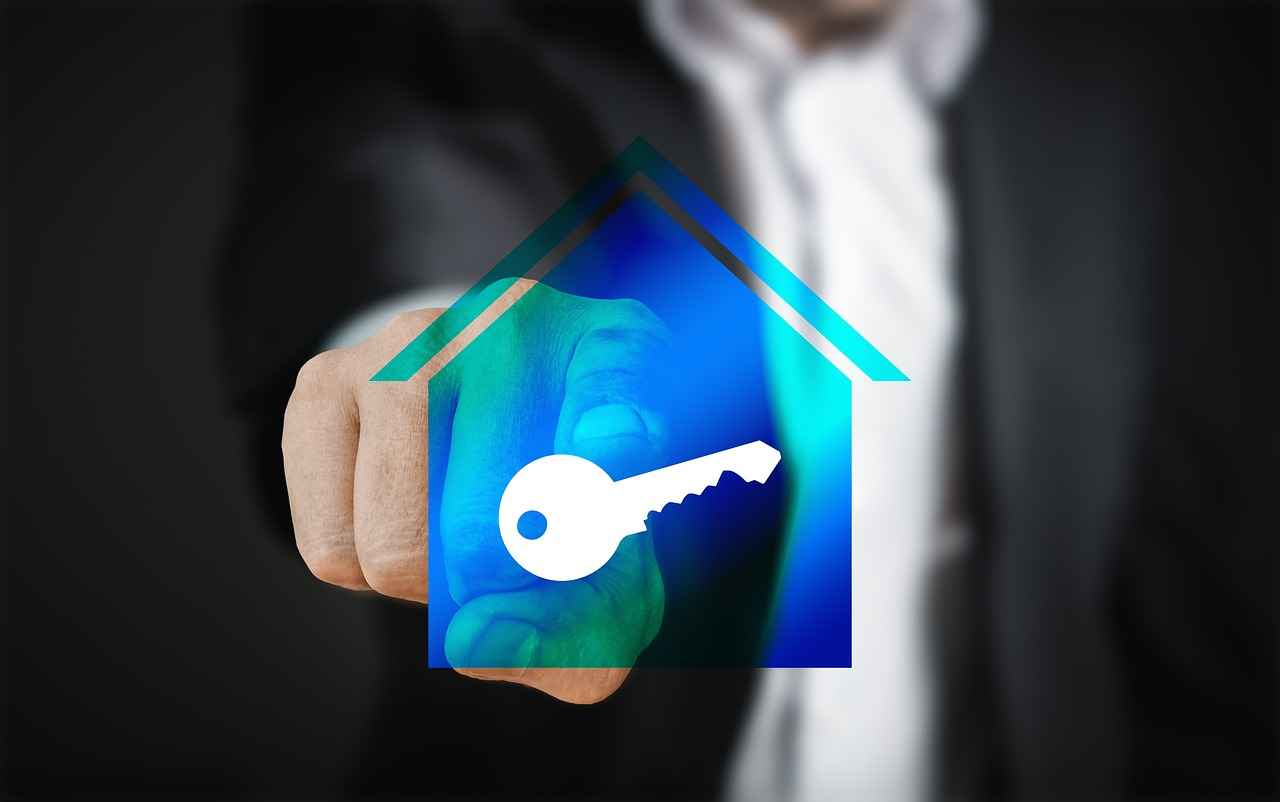
5. Smart Thermostats for Energy Efficiency
Smart thermostats are revolutionizing the way we manage our home heating and cooling systems. These innovative devices, including popular models like the Nest Learning Thermostat, are designed to optimize energy usage, leading to significant savings on utility bills. By learning user preferences and daily routines, smart thermostats can adjust heating and cooling schedules automatically, ensuring optimal comfort while conserving energy.
One of the standout features of smart thermostats is their ability to be controlled remotely. Users can easily adjust their home’s temperature from anywhere using a smartphone app or through voice commands with Google Assistant. This level of control not only adds convenience but also allows homeowners to make real-time adjustments based on their needs, whether they are at home or away.
| Feature | Description |
|---|---|
| Learning Capabilities | Smart thermostats learn from your habits and automatically adjust settings to ensure comfort and energy efficiency. |
| Remote Control | Adjust your thermostat from anywhere using a smartphone app or voice commands through Google Assistant. |
| Energy Reports | Receive detailed reports on energy usage, helping you make informed decisions about your heating and cooling practices. |
In addition to energy savings, smart thermostats contribute to a more sustainable lifestyle. By optimizing heating and cooling based on actual usage patterns, these devices can significantly reduce carbon footprints. Many models also provide insights into energy consumption, allowing users to identify areas where further savings can be made.
Overall, investing in a smart thermostat is a smart choice for those looking to enhance their home’s energy efficiency while enjoying the convenience of modern technology. With features like learning capabilities, remote control, and energy reporting, smart thermostats are a key component of a smart home ecosystem.
5.1. Learning Capabilities
Smart thermostats are revolutionizing home climate control by incorporating advanced learning capabilities. These devices are designed to adapt to user behavior over time, providing a tailored experience that maximizes both comfort and energy efficiency. The ability to learn from individual habits means that these thermostats can adjust their settings automatically, ensuring that the home environment is always at an optimal temperature.
For instance, when a user consistently adjusts the thermostat to a specific temperature at certain times of the day, the smart thermostat takes note of these preferences. It then begins to automatically replicate these adjustments, eliminating the need for manual changes. This not only enhances the user experience but also contributes to significant energy savings.
Moreover, many smart thermostats utilize geofencing technology. This feature allows the thermostat to track the location of the user’s smartphone. When the user leaves home, the thermostat can automatically adjust to an energy-saving mode, and when the user is on their way back, it can prepare the home by adjusting the temperature to a comfortable level before they arrive.
Additionally, smart thermostats often come equipped with learning algorithms that analyze data patterns over time. These algorithms can identify trends in energy usage, allowing for even more precise adjustments. For example, if the thermostat notices that the house tends to be cooler during specific seasons, it will adjust accordingly without any input from the user.
In conclusion, the learning capabilities of smart thermostats not only provide unparalleled convenience but also contribute to a more energy-efficient home. By understanding and adapting to user preferences, these devices ensure a comfortable living environment while reducing energy costs.
5.2. Remote Control Features
In today’s fast-paced world, remote control features in smart thermostats have emerged as a game-changer for homeowners. These features empower users to manage their home’s heating and cooling systems from virtually anywhere, whether they are at work, on vacation, or simply running errands.
Imagine being able to adjust your home’s temperature with just a few taps on your smartphone or a simple voice command to your Google Assistant. This flexibility not only enhances comfort but also contributes to energy efficiency, allowing users to save on utility bills.
- Convenience: With remote access, you can ensure your home is at the perfect temperature before you arrive. No more stepping into a cold or sweltering house after a long day!
- Energy Savings: By adjusting your thermostat remotely, you can avoid heating or cooling an empty home, significantly reducing energy waste.
- Peace of Mind: If you forget to adjust your thermostat before leaving, you can easily do it from your phone, ensuring your home stays comfortable and secure.
Moreover, many smart thermostats offer additional features like geofencing, which automatically adjusts the temperature based on your location. This means that as you approach your home, the system can start preparing the ideal environment for your return.
In conclusion, the remote control features of smart thermostats not only provide unparalleled convenience but also play a crucial role in energy management. By embracing these technologies, homeowners can enjoy a more comfortable living space while contributing to a more sustainable future.

6. Smart Appliances for Modern Living
Smart appliances are revolutionizing the way we interact with our homes, making daily tasks easier and more efficient. These innovative devices, such as refrigerators and ovens, are designed to integrate seamlessly with platforms like Google Assistant, offering users the convenience of remote monitoring and control. This not only enhances cooking experiences but also simplifies food management.
One of the standout features of smart appliances is their ability to provide real-time updates on food inventory. For instance, smart refrigerators can track the items inside, notifying users when they are running low on essentials. This functionality can help streamline grocery shopping, ensuring that nothing is forgotten during your next trip to the store.
Moreover, smart ovens allow users to preheat and monitor cooking progress from anywhere in the house. With the help of Google Assistant, you can simply say, “Preheat the oven to 350 degrees,” and the oven will start warming up, eliminating the need to walk to the kitchen. This capability not only saves time but also ensures that meals are cooked to perfection every time.
- Remote Monitoring: Check the status of your cooking or food inventory from your smartphone, ensuring you are always in control.
- Recipe Suggestions: Smart refrigerators can suggest recipes based on the ingredients you have, making meal planning more accessible.
- Energy Efficiency: Many smart appliances are designed to optimize energy usage, helping you save on utility bills.
In conclusion, integrating smart appliances into your home can significantly enhance your daily living experience. By offering features such as remote control and real-time monitoring through Google Assistant, these devices not only make cooking and food management more efficient but also contribute to a more connected and convenient lifestyle. Embrace the future of home living with smart appliances that cater to your needs.
6.1. Smart Refrigerators
Smart Refrigerators are revolutionizing the way we manage our food and meal preparation. These innovative appliances go beyond traditional cooling capabilities, integrating advanced technology to enhance the kitchen experience.
One of the standout features of smart refrigerators is inventory tracking. This function allows you to keep an up-to-date list of the items stored inside your fridge. Using built-in cameras or apps, you can check your inventory remotely, ensuring you never run out of essentials. This feature is especially useful for busy families and individuals who want to streamline their grocery shopping.
In addition to inventory management, smart refrigerators offer recipe suggestions. By analyzing the ingredients you have on hand, these fridges can recommend meals you can prepare, minimizing food waste and encouraging healthier eating habits. Imagine asking your fridge for dinner ideas and receiving tailored recipes based on what you already have!
Moreover, many smart refrigerators are compatible with voice assistants like Google Assistant, allowing for hands-free control. You can simply ask your assistant to add items to your shopping list or check the temperature inside the fridge without lifting a finger.
Another significant benefit of smart refrigerators is their ability to monitor expiration dates. Some models can even alert you when items are nearing their expiration, helping you manage your food more effectively and avoid unnecessary waste.
In summary, smart refrigerators are not just appliances; they are integral components of a modern kitchen that simplify meal planning and grocery shopping. With features like inventory tracking, recipe suggestions, and voice control, they provide convenience and efficiency, making them a worthy investment for any home.
| Feature | Benefit |
|---|---|
| Inventory Tracking | Stay updated on food items and reduce waste. |
| Recipe Suggestions | Encourages cooking with available ingredients. |
| Voice Control | Hands-free operation for convenience. |
| Expiration Monitoring | Helps prevent food spoilage and waste. |
Image of a Smart Refrigerator
6.2. Smart Ovens
Smart Ovens are revolutionizing the way we cook, bringing convenience and precision to the kitchen. These innovative appliances allow users to preheat their ovens and monitor cooking progress from anywhere, ensuring that meals are prepared perfectly every time. With the integration of smart technology, users can enjoy a seamless cooking experience that enhances their culinary skills.
One of the standout features of smart ovens is their ability to be controlled remotely through a smartphone app or voice commands via virtual assistants like Google Assistant. This means you can start preheating your oven while still at the grocery store or adjust cooking times without having to step into the kitchen. This level of flexibility not only saves time but also reduces the chances of overcooking or burning food.
Additionally, many smart ovens come equipped with advanced cooking modes such as air frying, broiling, and baking, which can be easily selected through the app or voice commands. This allows users to experiment with different cooking techniques without the need for multiple appliances. Furthermore, some models feature built-in sensors that can automatically adjust cooking times and temperatures based on the dish being prepared, ensuring optimal results.
| Feature | Benefit |
|---|---|
| Remote Preheating | Start cooking from anywhere |
| Voice Control | Hands-free operation |
| Advanced Cooking Modes | Versatility in cooking techniques |
| Automatic Adjustments | Perfect cooking results every time |
In conclusion, smart ovens represent a significant advancement in kitchen technology. By allowing users to monitor and control their cooking remotely, these appliances not only enhance convenience but also improve the overall cooking experience. As more households embrace smart technology, the popularity of smart ovens is expected to grow, making them a staple in modern kitchens.

7. Integrating Google Assistant with Home Entertainment
Integrating Google Assistant into your home entertainment system revolutionizes the way you enjoy media. With the ability to control streaming devices, sound systems, and televisions using just your voice, the experience becomes not only more convenient but also more enjoyable. This section will explore how Google Assistant enhances your media consumption and makes your entertainment setup more seamless.
7.1. Voice Control for Streaming Devices
One of the standout features of Google Assistant is its capability to control streaming devices such as Chromecast and Roku. Users can simply say commands like, “Hey Google, play Stranger Things on Netflix,” and the device will automatically start streaming the desired content. This eliminates the need for remote controls and allows for a more relaxed viewing experience.
7.2. Enhancing Audio Systems
Google Assistant can also manage audio systems, making it easy to play music or adjust the volume with voice commands. For instance, you can instruct your sound system to play your favorite playlist or increase the volume without leaving your seat. This feature is especially beneficial during gatherings, where hands-free operation can enhance the overall atmosphere.
7.3. Smart TVs and Voice Search
Smart TVs that are compatible with Google Assistant offer voice search capabilities, allowing users to find their favorite shows and movies effortlessly. Instead of navigating through menus, you can simply ask, “What’s on tonight?” and receive tailored recommendations based on your viewing history.
7.4. Creating a Seamless Media Experience
The integration of Google Assistant into your home entertainment system leads to a more cohesive media experience. With the ability to control multiple devices from a single platform, users can create routines that enhance their viewing experience. For example, you can set a command that dims the lights and starts your favorite movie with just one phrase.
Conclusion
In conclusion, integrating Google Assistant with your home entertainment system not only simplifies control over your devices but also enriches your overall media experience. By utilizing voice commands for streaming, audio systems, and smart TVs, you can enjoy a more immersive and convenient entertainment setup.
7.1. Streaming Devices
Streaming devices have revolutionized the way we consume media, making it easier than ever to access our favorite shows, movies, and music. Among these devices, Chromecast stands out as a popular choice, allowing users to stream content directly to their TVs using voice commands. This feature not only simplifies the viewing experience but also enhances the overall convenience of home entertainment.
With Chromecast, users can easily cast content from their smartphones, tablets, or computers to their television screens. This functionality is particularly appealing for those who prefer using their mobile devices to control what they watch. By simply saying commands like, “Hey Google, play Stranger Things on Netflix,” users can instantly start streaming their favorite series without the need for multiple remote controls.
In addition to Chromecast, several other streaming devices are compatible with Google Assistant, including:
- Roku – Known for its user-friendly interface and extensive channel selection.
- Amazon Fire TV Stick – Offers robust integration with Alexa and a wide range of apps.
- Apple TV – Provides seamless access to Apple services and a variety of streaming platforms.
Each of these devices offers unique features, but they all share the common benefit of voice control through Google Assistant. This integration allows users to navigate menus, search for content, and control playback with simple voice commands, making the viewing experience more intuitive.
Furthermore, the ability to create personalized watch lists and receive recommendations based on viewing habits enhances user engagement. As the demand for smart home technology continues to grow, streaming devices like Chromecast are becoming essential components of modern entertainment systems.
In conclusion, streaming devices have made accessing media more convenient than ever. With the integration of Google Assistant, users can enjoy a hands-free viewing experience that simplifies the process and enhances entertainment options. Whether you are a casual viewer or a binge-watching enthusiast, these devices offer something for everyone.
7.2. Smart TVs
Smart TVs have revolutionized the way we consume media, offering an interactive and engaging viewing experience. With the integration of Google Assistant, these televisions have become even more powerful, allowing users to control their entertainment with just their voice. This article will explore the features and benefits of smart TVs compatible with Google Assistant, making it easier for users to find and enjoy their favorite shows and movies.
| Feature | Description |
|---|---|
| Voice Search | Users can effortlessly search for content by simply speaking into their remote or TV, eliminating the need for manual typing. |
| Content Recommendations | Google Assistant can suggest shows and movies based on your viewing history and preferences, making it easier to discover new favorites. |
| Device Control | Control other smart home devices directly from your TV, such as lights and thermostats, for a truly integrated smart home experience. |
With voice control capabilities, users can easily navigate streaming platforms like Netflix, Hulu, and YouTube. Instead of scrolling through endless menus, you can simply say, “Play Stranger Things on Netflix,” and your TV will automatically start streaming the show. This functionality not only saves time but also enhances the overall user experience.
Moreover, smart TVs compatible with Google Assistant are equipped with advanced AI technology that allows for personalized viewing experiences. The more you use your TV, the better it learns your preferences, suggesting relevant content that aligns with your tastes.
In conclusion, smart TVs that support Google Assistant offer a seamless and convenient way to enjoy entertainment. With features like voice search, content recommendations, and smart home integration, they are an essential addition to any modern living room. Embrace the future of television and transform your viewing habits with a smart TV today!

8. Smart Home Hubs and Controllers
Smart home hubs play a critical role in the modern smart home ecosystem. They serve as the centralized control unit for various smart devices, allowing users to manage their entire setup effortlessly. By integrating with Google Assistant, these hubs enhance convenience and functionality, making it easier than ever to control your home environment.
With a smart home hub, users can connect multiple devices, including lights, thermostats, cameras, and speakers, all through a single interface. This centralization not only simplifies control but also creates a more cohesive smart home experience. For instance, you can adjust your home’s lighting, temperature, and security settings with just a few voice commands.
One of the standout features of smart home hubs is the ability to create custom routines. Users can set specific commands to trigger multiple actions at once. For example, saying “Goodnight” could turn off all the lights, lock the doors, and set the thermostat to a comfortable sleeping temperature. This level of automation enhances the overall user experience and promotes energy efficiency.
| Feature | Description |
|---|---|
| Central Control | Manage all devices from one app or voice command. |
| Custom Routines | Automate multiple actions with a single command. |
| Device Compatibility | Works with a wide range of smart devices. |
Moreover, smart home hubs like the Google Nest Hub not only allow for device management but also provide additional functionalities, such as displaying calendars, weather updates, and even streaming music or videos. This multifunctionality makes them an invaluable addition to any smart home.
In conclusion, integrating a smart home hub with Google Assistant not only centralizes control but also enhances the overall smart home experience. It allows users to enjoy greater efficiency, convenience, and peace of mind, making it a worthy investment for any modern household.
8.1. Google Nest Hub
The Google Nest Hub is a revolutionary smart home device that serves as a central controller for your entire ecosystem. With its intuitive design, users can manage various smart devices, monitor camera feeds, and access information effortlessly. This device is not just a smart display; it is a comprehensive solution that enhances the way you interact with your home.
One of the standout features of the Google Nest Hub is its user-friendly interface. The touchscreen display allows for easy navigation, making it simple to control lights, thermostats, and other compatible devices with just a few taps. Furthermore, the Google Assistant integration means that users can issue voice commands to manage their smart home, providing a hands-free experience that is both convenient and efficient.
Additionally, the Google Nest Hub offers the ability to view live camera feeds from security cameras installed around your home. This feature not only enhances security but also provides peace of mind, allowing users to monitor their property from anywhere in the house. The device supports various camera brands, ensuring compatibility with your existing security setup.
Moreover, the Google Nest Hub serves as an information hub. Users can ask questions, set reminders, check the weather, and even control their music—all from a single device. This multifunctionality makes it an essential part of any smart home setup.
In conclusion, the Google Nest Hub is more than just a smart display; it is a versatile and powerful tool that centralizes control of your smart home. Its seamless integration with Google Assistant and its ability to manage multiple devices and services make it an invaluable asset for anyone looking to enhance their home automation experience.
8.2. Third-Party Hubs
Third-party hubs play a pivotal role in the evolution of smart home ecosystems, particularly for users who want to maximize their device compatibility and functionality. One of the most notable examples is Samsung SmartThings, which serves as a bridge connecting a myriad of devices across various brands and technologies.
By incorporating third-party hubs like Samsung SmartThings into your smart home setup, you can significantly enhance the overall experience. These hubs allow for seamless communication between devices that may not natively support each other, thus broadening the range of compatible products. For instance, you might have smart lights from one brand, a thermostat from another, and security cameras from yet another. A third-party hub can unify these devices under one control system, simplifying your smart home management.
Moreover, the integration capabilities of third-party hubs often extend beyond basic device control. They can facilitate advanced automation features, enabling users to create complex routines that involve multiple devices. For example, you could set a routine that turns off all lights and lowers the thermostat when you leave home, or one that activates your security cameras and locks the doors at night.
Another advantage of using a third-party hub is the potential for enhanced interoperability. With a hub, you can mix and match devices from different manufacturers without worrying about compatibility issues. This flexibility allows you to customize your smart home to fit your specific needs and preferences.
In summary, third-party hubs like Samsung SmartThings are essential for anyone looking to create a comprehensive and efficient smart home. Their ability to expand compatibility, enhance automation, and provide a unified control system makes them an invaluable addition to any smart home setup.
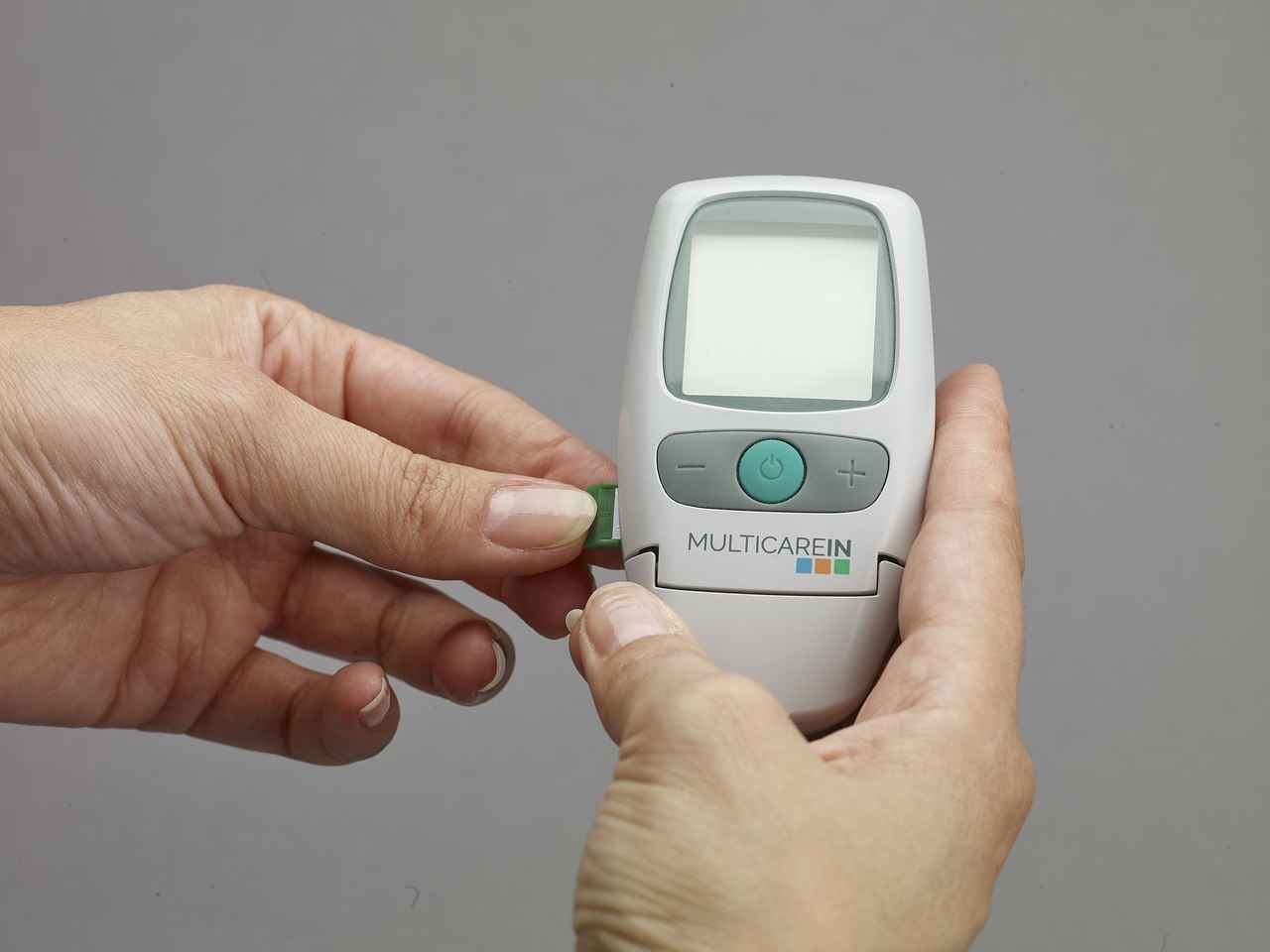
9. Smart Home Health Devices
Smart Home Health Devices are becoming increasingly popular as people seek to enhance their well-being and maintain a healthy living environment. These innovative devices, which can be easily controlled via Google Assistant, offer a range of features designed to improve air quality, track health metrics, and promote overall wellness.
Integrating smart health devices into your home not only simplifies health tracking but also allows for real-time monitoring of your environment. This integration can lead to better health outcomes and a more informed lifestyle.
Smart air purifiers are equipped with sensors that monitor air quality and filter out harmful pollutants. With voice commands via Google Assistant, users can easily adjust settings or check air quality status. These devices are essential for maintaining a clean and healthy atmosphere, especially for those with allergies or respiratory issues.
Smart scales provide more than just weight measurements. They track various health metrics such as body fat percentage, muscle mass, and hydration levels. By syncing with Google Assistant, users can access their health data effortlessly, set goals, and receive reminders, making it easier to stay on track with their fitness journeys.
Voice control through Google Assistant adds a layer of convenience, allowing users to interact with devices hands-free. Whether adjusting the air purifier’s settings or checking weight metrics, voice commands make health management seamless and efficient.
As smart home technology continues to evolve, incorporating health-focused devices like air purifiers and smart scales can significantly enhance well-being. By leveraging Google Assistant, users can create a healthier living environment, making informed decisions about their health effortlessly.
9.1. Smart Air Purifiers
In today’s world, maintaining a clean and healthy indoor environment is more important than ever. Smart air purifiers have emerged as essential devices for achieving this goal. These innovative appliances not only filter pollutants and allergens but also monitor air quality in real-time.
One of the standout features of smart air purifiers is their ability to be controlled through voice commands via platforms like Google Assistant. This means you can effortlessly adjust settings, check air quality levels, or turn the device on and off without lifting a finger. Imagine walking into your home and simply saying, “Hey Google, turn on the air purifier,” ensuring that your living space is always fresh and welcoming.
Furthermore, many smart air purifiers come equipped with advanced sensors that detect pollutants such as dust, smoke, and pet dander. They automatically adjust their operation based on the current air quality, providing optimal performance without requiring constant manual intervention.
These devices often feature user-friendly apps that provide detailed insights into air quality trends, filter life, and maintenance reminders. This level of transparency helps users stay informed and proactive about their indoor air quality.
Additionally, smart air purifiers can easily integrate with other smart home devices. For instance, they can work in conjunction with smart thermostats to optimize energy usage while maintaining a comfortable atmosphere. This synergy not only enhances air quality but also contributes to energy efficiency, making your home smarter and more sustainable.
In conclusion, investing in a smart air purifier is a forward-thinking choice for anyone looking to improve their home environment. With features like voice control, real-time monitoring, and seamless integration with other smart devices, these purifiers represent a significant leap forward in home health technology.
9.2. Smart Scales
Smart scales have revolutionized the way we monitor our health by providing detailed insights into our weight and various health metrics. These innovative devices go beyond just measuring weight; they track body composition, muscle mass, body fat percentage, and even hydration levels. By integrating with Google Assistant, users can easily access and manage their health data, facilitating a more informed approach to wellness.
One of the primary benefits of using smart scales is the ability to sync data with health apps on your smartphone. This integration allows you to visualize trends over time, making it easier to set and achieve fitness goals. For instance, if you’re trying to lose weight or gain muscle, the scale provides real-time feedback that can be accessed through simple voice commands using Google Assistant. You can ask questions like, “Hey Google, what’s my weight trend?” and receive immediate insights.
Furthermore, many smart scales offer features such as multiple user profiles, making them suitable for families. Each family member can track their own metrics without interfering with others’ data. This functionality is particularly beneficial in a household where everyone is focused on their health and fitness journeys.
In addition to tracking weight and body composition, some smart scales can also provide health insights based on your data. For example, they may alert you to significant changes in your body fat percentage or suggest when to consult a healthcare professional. This proactive approach to health management is invaluable in today’s fast-paced world.
As technology continues to evolve, the integration of smart scales with Google Assistant will likely become even more sophisticated. Future updates could include personalized health tips or reminders based on your unique metrics, further enhancing the user experience.
In conclusion, smart scales are an essential tool for anyone looking to take control of their health. By leveraging the power of Google Assistant, users can effortlessly manage their health data and gain valuable insights, making smart scales a must-have for modern health management.

10. Troubleshooting Common Issues with Google Assistant
Troubleshooting Common Issues with Google Assistant
As users integrate Google Assistant into their smart home environments, they may encounter various challenges that can disrupt the overall experience. Understanding these common issues and their solutions is essential for maximizing the functionality of your smart devices.
- Device Connectivity Issues: One of the most frequent problems users face involves connectivity. Devices may fail to respond or connect to Google Assistant due to unstable Wi-Fi networks. To resolve this, ensure that your router is functioning properly and that all devices are connected to the same network. A simple reboot of the router can often rectify these issues.
- Voice Recognition Challenges: Users may experience difficulties with voice commands being misinterpreted or not recognized at all. This can be attributed to background noise or unclear speech. To improve recognition, speak clearly and consider reducing ambient noise levels. Additionally, adjusting the microphone sensitivity settings in the Google Home app can enhance performance.
- Integration Failures: Sometimes, devices may not integrate properly with Google Assistant. This can occur if the device is not compatible or if the necessary app is not installed. Always check the compatibility list provided by Google and ensure that all required applications are updated to their latest versions.
- Delayed Responses: If Google Assistant responds slowly or not at all, it could be due to server issues or high traffic. In such cases, waiting a few moments and trying again can help. Additionally, checking for outages on Google’s service status page can provide insights into any ongoing issues.
- Routine Failures: Users may find that custom routines do not execute as planned. This can happen if the commands are not set up correctly. Double-check the routine settings in the Google Home app to ensure that all commands are properly configured.
By addressing these common issues proactively, users can improve their experience with Google Assistant and enjoy a more seamless smart home environment. Regular updates and maintenance of devices, along with staying informed about new features and fixes, will further enhance the functionality and reliability of your smart home setup.
10.1. Device Connectivity Issues
Device Connectivity Issues can significantly impact the performance of your smart home devices. A stable Wi-Fi connection is essential for ensuring that your devices communicate effectively with each other and with Google Assistant. Below, we will explore the common causes of connectivity problems and provide practical solutions to enhance your smart home experience.
- Wi-Fi Signal Strength: Weak Wi-Fi signals can lead to intermittent connectivity. Ensure your router is positioned centrally in your home and consider using Wi-Fi extenders to boost coverage.
- Device Compatibility: Not all smart devices are created equal. Ensure that your devices are compatible with Google Assistant and that they are updated to the latest firmware to minimize connectivity issues.
- Network Congestion: Too many devices connected to the same network can cause slowdowns. Try disconnecting unused devices or upgrading your internet plan for better bandwidth.
- Interference from Other Devices: Other electronic devices, such as microwaves and cordless phones, can interfere with Wi-Fi signals. Keep your router away from such devices to maintain a strong connection.
- Router Settings: Improper router settings can hinder connectivity. Ensure that your router’s firmware is up-to-date and that settings like Quality of Service (QoS) are configured to prioritize smart home devices.
By addressing these common connectivity issues, you can enhance the performance of your smart home devices and ensure a seamless experience with Google Assistant. Remember, a strong and stable connection is the foundation of a well-functioning smart home.
10.2. Voice Recognition Challenges
Voice recognition technology has transformed the way we interact with devices, particularly in smart home environments. However, users often face challenges that can hinder performance, especially when it comes to voice commands. Understanding these challenges and how to overcome them is essential for a seamless experience.
One of the primary issues with voice recognition is background noise. Environments filled with chatter, music, or other distractions can interfere with the device’s ability to accurately interpret commands. To improve recognition accuracy, it is advisable to minimize background noise when issuing commands. This can be achieved by moving to a quieter area or using devices equipped with noise-cancellation technology.
Another factor contributing to voice recognition challenges is the clarity of the commands given. Users should speak clearly and at a moderate pace to ensure their commands are understood. Practicing enunciation can significantly enhance the device’s ability to process requests. Additionally, using specific phrases or keywords that the device recognizes can help avoid misunderstandings.
Moreover, distance from the device can impact voice recognition. Speaking too far away may cause the device to misinterpret commands or fail to respond altogether. It is recommended to maintain a reasonable distance, ideally within 3 to 6 feet, for optimal performance.
In conclusion, while voice recognition technology offers immense convenience, users may encounter challenges related to background noise and command clarity. By minimizing distractions and speaking clearly, users can significantly enhance the performance of their voice-activated devices, ensuring a smoother and more efficient smart home experience.
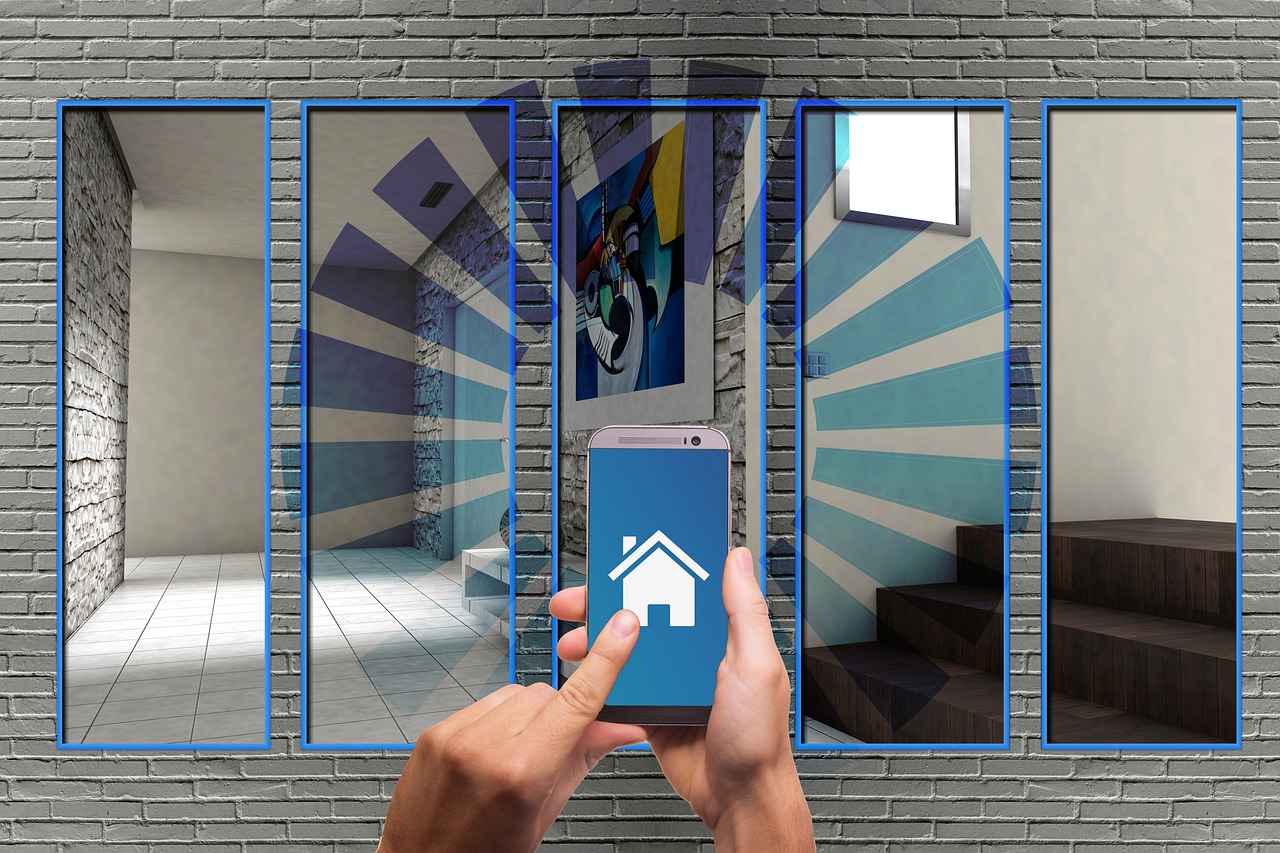
11. Future Trends in Smart Home Technology
The smart home landscape is continually evolving, with emerging technologies and trends shaping the future of Google Assistant compatibility and functionality. As we look ahead, several key trends are poised to revolutionize how we interact with our smart home devices.
- Integration of AI and Machine Learning: The advancement of artificial intelligence (AI) and machine learning is set to enhance the capabilities of Google Assistant. These technologies will allow the assistant to learn from user interactions, making it more intuitive and responsive. For instance, it could predict user needs based on past behavior, automating tasks without explicit commands.
- Increased Device Compatibility: As more manufacturers adopt smart technology, a broader range of devices will become compatible with Google Assistant. This trend will allow users to integrate more products into their smart home ecosystem, providing greater flexibility and control.
- Enhanced Security Features: With the rise in smart home adoption, security will become a top priority. Future updates to Google Assistant may include advanced security features, such as facial recognition and real-time alerts for suspicious activities, enhancing the safety of smart homes.
- Focus on Energy Efficiency: Smart home devices will increasingly prioritize energy efficiency, helping users reduce their carbon footprint. Google Assistant may incorporate features that analyze energy usage patterns and suggest optimized settings for devices, contributing to sustainable living.
- Seamless User Experience: Future developments will focus on creating a seamless user experience. This includes improving voice recognition capabilities, minimizing response times, and ensuring that commands are executed accurately, making interactions with Google Assistant more fluid.
- Expansion of Smart Home Hubs: The role of smart home hubs will expand, allowing for centralized control of various devices. This will simplify the user experience, enabling users to manage their entire ecosystem through Google Assistant more efficiently.
In conclusion, the future of smart home technology is bright, with advancements that promise to enhance user experience, security, and energy efficiency. As Google Assistant continues to evolve, it will play a crucial role in shaping the smart home of tomorrow.
11.1. AI and Machine Learning Advancements
Advancements in AI and machine learning are revolutionizing the capabilities of Google Assistant, enabling it to become increasingly intuitive and responsive to user needs. These technological improvements are paving the way for a more personalized and efficient smart home experience.
As AI algorithms become more sophisticated, Google Assistant is learning to understand context and user preferences better than ever before. This means that the assistant can now provide tailored suggestions and anticipate user needs based on past interactions. For instance, if a user frequently sets the thermostat to a specific temperature in the evening, Google Assistant can learn this pattern and automatically adjust the settings at the appropriate time.
Furthermore, machine learning allows Google Assistant to improve its voice recognition capabilities. This enhancement reduces misunderstandings and increases the accuracy of commands, making it easier for users to interact with their smart devices. The assistant can now differentiate between voices, allowing for personalized experiences for different family members. This feature is particularly useful in households with multiple users, ensuring that each person receives relevant information and services.
Another exciting development is the integration of AI-driven natural language processing. This advancement enables Google Assistant to engage in more fluid conversations, understanding complex queries and responding in a more human-like manner. Users can ask multi-part questions or follow-up inquiries without needing to repeat context, creating a more seamless interaction.
In conclusion, the ongoing advancements in AI and machine learning are set to significantly enhance Google Assistant’s functionality. As these technologies continue to evolve, users can expect a more intuitive, responsive, and personalized smart home experience, making everyday tasks easier and more enjoyable.
11.2. Increased Device Compatibility
Increased Device Compatibility is a pivotal trend in the evolution of smart home technology, particularly as it relates to Google Assistant. As more manufacturers embrace smart technology, users can anticipate an expanding array of devices that seamlessly integrate with Google Assistant, thereby significantly enhancing overall functionality.
The growing compatibility of smart devices with Google Assistant is not just a trend; it is a response to the increasing demand for interconnectedness in home automation. This trend is driven by several factors:
- Consumer Demand: Users are increasingly seeking devices that can work together to create a cohesive smart home ecosystem. The more devices that are compatible with Google Assistant, the more streamlined and efficient the user experience becomes.
- Technological Advancements: Innovations in artificial intelligence and machine learning are making it easier for manufacturers to develop products that can communicate with Google Assistant. This has led to the introduction of a wide range of devices, from smart light bulbs to advanced security systems.
- Open Standards: The adoption of open standards in smart technology has encouraged manufacturers to create products that are compatible with multiple platforms, including Google Assistant. This openness fosters collaboration and innovation within the industry.
For instance, a user can now control their smart thermostat, lights, and security cameras through simple voice commands via Google Assistant. This integration not only enhances user convenience but also promotes energy efficiency and security in the home.
Moreover, as manufacturers continue to innovate, users can expect even more sophisticated devices that utilize Google Assistant’s capabilities. This includes features such as enhanced voice recognition, personalized responses, and improved automation routines that adapt to user preferences.
In conclusion, the increased device compatibility with Google Assistant is transforming the smart home landscape. As technology continues to advance, users will benefit from a more interconnected and efficient home environment, making smart living more accessible and enjoyable.
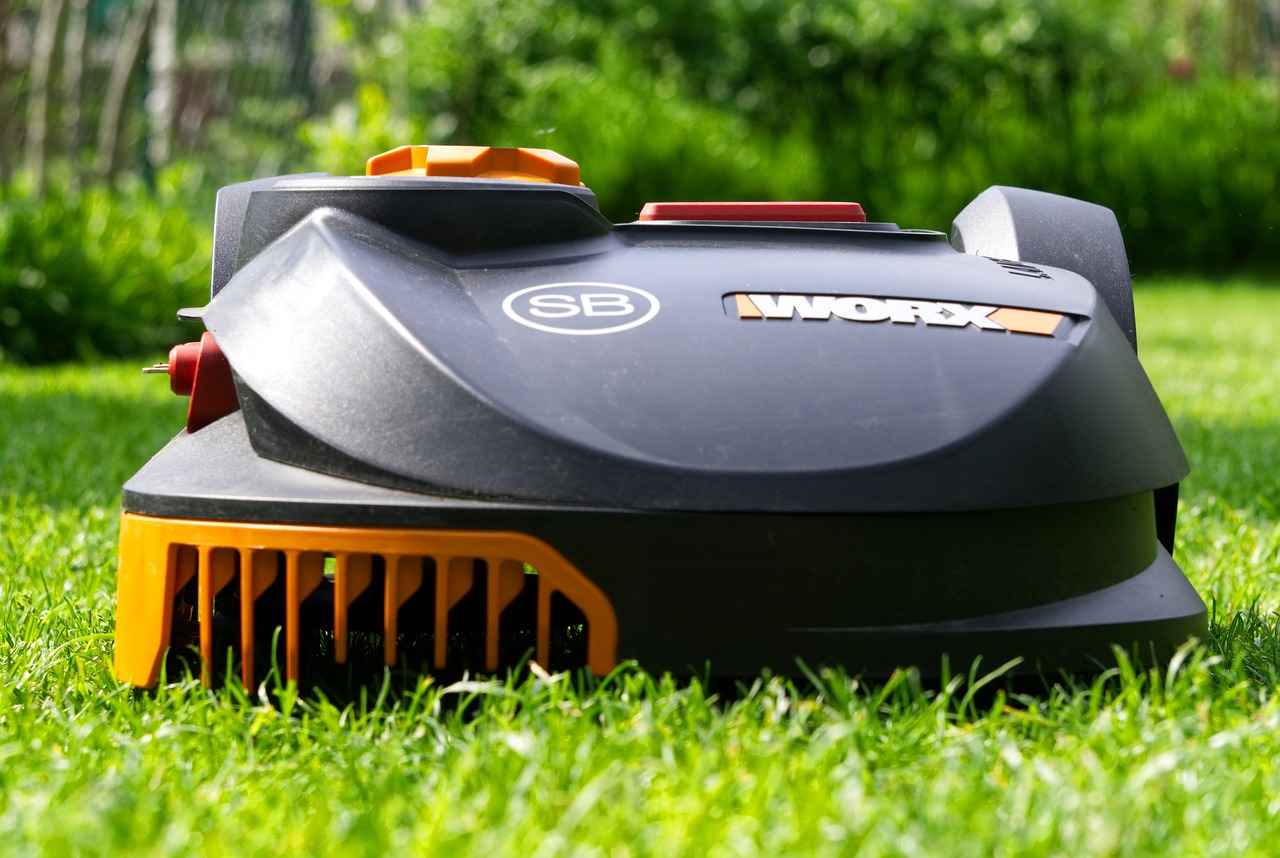
12. Conclusion: Embracing the Smart Home Revolution
In today’s fast-paced world, embracing the smart home revolution is no longer just a trend but a necessity for modern homeowners. Integrating Google Assistant into your smart home ecosystem not only enhances convenience and efficiency but also fundamentally transforms how you interact with your living space. This transformation makes it a worthwhile investment for those looking to elevate their home experience.
By utilizing voice commands, you can control various devices hands-free, allowing for a seamless living environment. Imagine walking into your home and simply saying, “Hey Google, turn on the lights,” and instantly, your space is illuminated to your preferred setting. This level of automation simplifies daily tasks, freeing up your time for what truly matters.
Furthermore, Google Assistant’s compatibility with a diverse range of smart devices ensures that you can tailor your home to your specific needs. From smart thermostats that learn your heating preferences to security cameras that provide real-time alerts, the integration of these technologies creates a cohesive system that enhances your lifestyle.
Additionally, the ability to create custom routines means you can automate multiple actions with a single command. For instance, you could set a routine that turns off all your lights, locks your doors, and adjusts the thermostat when you say, “Goodnight.” This not only adds a layer of convenience but also promotes energy efficiency.
As we look to the future, advancements in AI and machine learning promise even more intuitive interactions with Google Assistant, making it an increasingly vital component of smart homes. With the ongoing development of new devices and technologies, homeowners can expect a broader range of options to enhance their living spaces.
In conclusion, integrating Google Assistant into your home is more than just adopting new technology; it’s a step towards a smarter, more efficient, and ultimately more enjoyable living environment. As you embrace this revolution, you’ll find that your home becomes not just a space to live, but a place that actively supports your lifestyle and well-being.
Frequently Asked Questions
- What devices are compatible with Google Assistant?
Google Assistant works seamlessly with a variety of smart home devices, including smart speakers, lights, cameras, thermostats, and even appliances like refrigerators and ovens. This compatibility allows you to control and automate your entire smart home system effortlessly.
- Can I control my smart home devices remotely?
Absolutely! Most smart home devices compatible with Google Assistant come with remote control features. This means you can adjust settings, check status, and manage your devices from anywhere, giving you ultimate convenience and peace of mind.
- How do I troubleshoot connectivity issues with Google Assistant?
If you’re facing connectivity issues, first check your Wi-Fi connection to ensure it’s stable. Restarting your router and the smart device can also help. If problems persist, make sure the device is properly set up in the Google Home app.
- What are custom routines in Google Assistant?
Custom routines allow you to automate multiple actions with a single voice command. For example, you can create a routine that turns off all lights and adjusts the thermostat when you say, “Goodnight.” This feature simplifies your daily tasks and enhances your smart home experience.
- How does Google Assistant improve home security?
Google Assistant enhances home security by integrating with smart cameras and doorbells. You can receive real-time alerts, view camera feeds, and communicate through smart doorbells, all through simple voice commands, ensuring your home is secure at all times.



